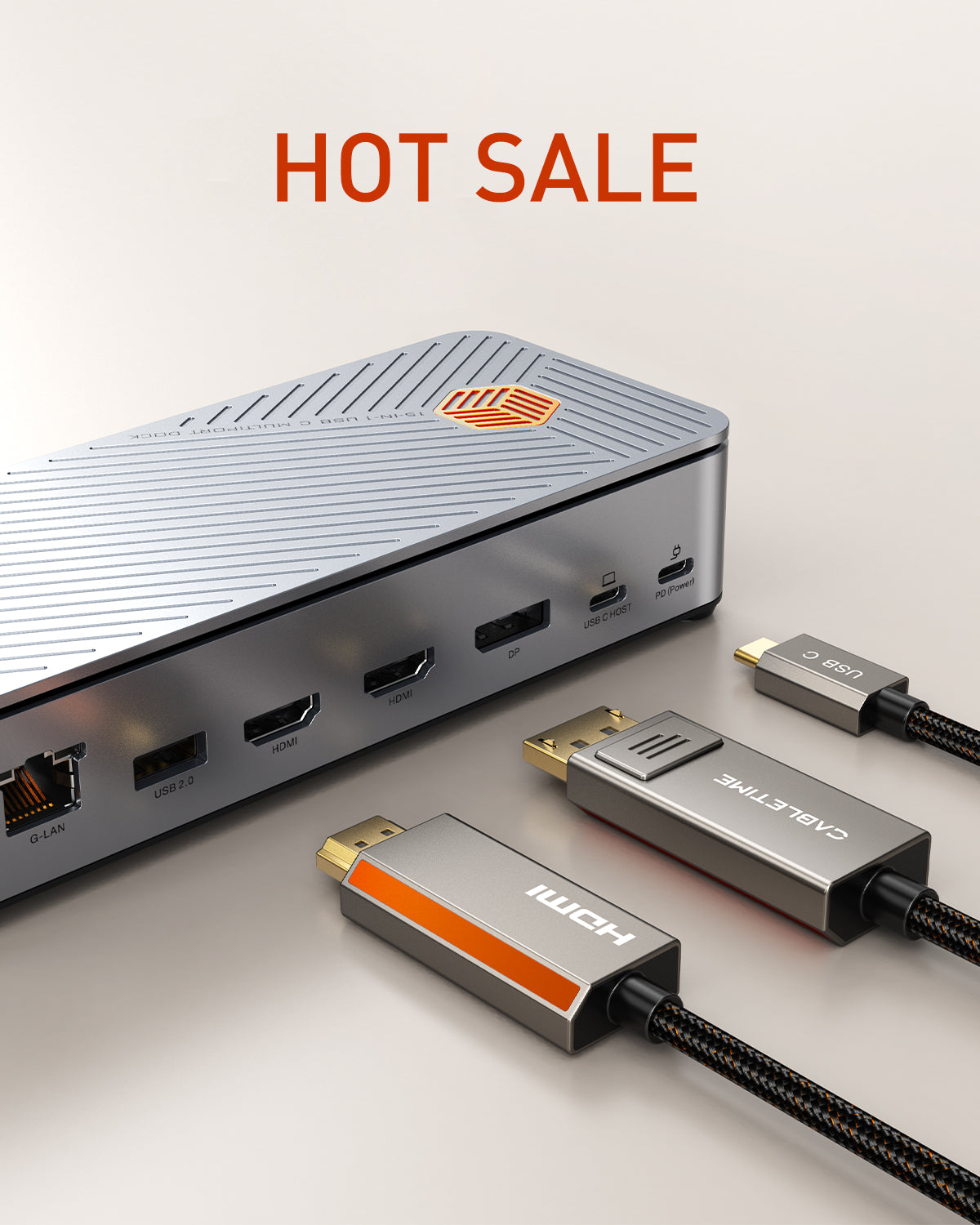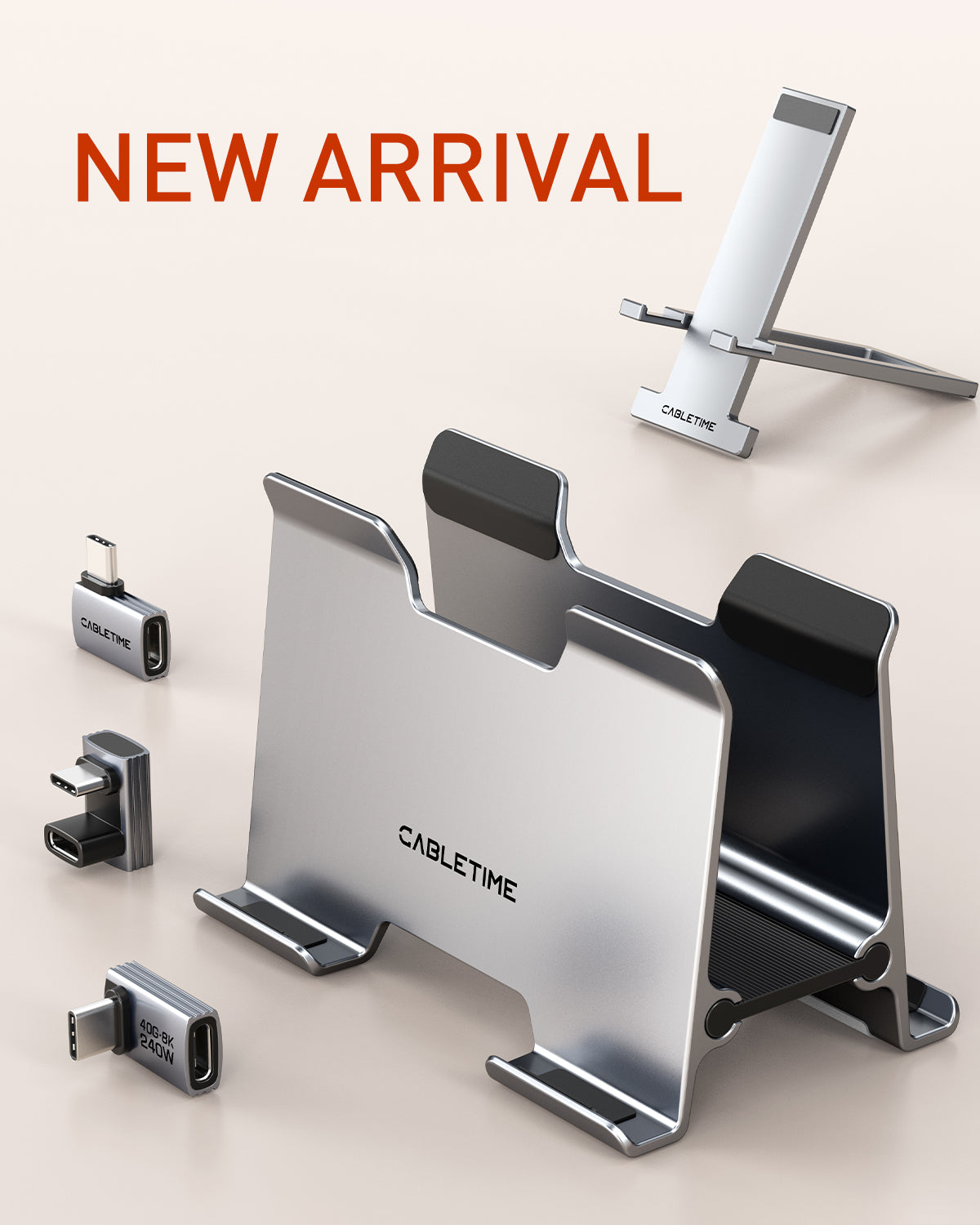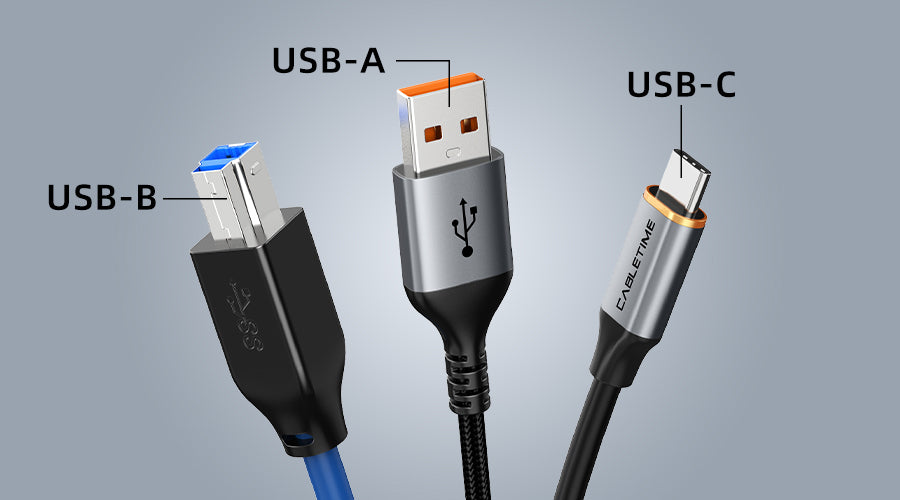Have you ever found yourself with more USB devices than ports on your computer? Or perhaps some of your USB devices don't seem to work properly when plugged into your laptop or desktop PC. If so, it's likely time to invest in a powered USB hub.
A powered USB hub can provide a number of benefits over the cheaper unpowered variety. From enhancing power supply to expanding port numbers, a powered hub is a worthwhile investment for many users.
Table of content
Key Takeaways
- Powered USB hubs provide consistent, stable power compared to unpowered hubs. This leads to better performance for power-hungry devices.
- More ports allow you to connect multiple peripherals without constantly unplugging and replugging. This saves time and hassle.
- Prevent power overload issues which can damage devices or lead to unexpected disconnects and lag.
- Get higher power output, up to 2000mA in powered hubs compared to just 500mA in unpowered options. This matters for power-hungry devices.
- Cost more upfront but deliver far more value over time through enhanced performance and expanded capability.
- Give you peace of mind knowing your USB devices have a steady, uninterrupted power flow. Avoid frustrations from underpowered setups.
The Difference Between Powered and Unpowered USB Hubs
Unpowered hubs, sometimes called passive hubs, do not have their own independent power source. They simply draw power from the USB port on your computer to distribute to each connected device.
Powered USB hubs, on the other hand, have their own AC power adapter that plugs into an electrical outlet. This gives the hub its own power source to draw from, rather than relying on the limited power supply from your laptop or desktop PC.
Pros and Cons of Unpowered Hubs
Pros
- Cheaper price point, usually $10-$20
- Simple plug-and-play connectivity
- Compact size for portability
Cons
- Limited power availability, usually only 100-500mA total
- Can overload and damage devices if too many are connected
- Not suitable for power-hungry devices
- Susceptible to brownouts and power fluctuations
Pros and Cons of Powered Hubs
Pros
- Provide consistent, stable power up to 2000mA
- Allow connection of multiple power-hungry devices
- Prevent overload and resulting damage or performance issues
- No worry about power fluctuations causing problems
Cons
- More expensive than unpowered, usually $30 to $100+
- Require a nearby power outlet to function
- Larger and heavier for less portability
As you can see, for an extra investment upfront, powered USB hubs provide a major advantage when it comes to delivering stable, sufficient power to all of your connected devices. The boost in available power reduces issues and risks while supporting better performance.
Enhancing Power Supply
One of the main benefits of a powered USB hub is the enhanced power supply it can provide to your connected peripherals and devices.
Rather than splitting a limited power supply across multiple devices, a powered hub has its own power adapter and can deliver up to 2000mA (2A) or more. This is far beyond the 100-500mA typically available from a single USB 2.0 or 3.0 port on your computer.

More available power means you can connect power-hungry devices without worry. Things like external hard drives, printers, webcams, game controllers, and even mobile devices like phones and tablets have higher power demands.
An unpowered hub may struggle to deliver enough juice to keep these devices running optimally. A brownout could cause your backup drive to disconnect during an important transfer or your webcam to turn off unexpectedly during a video call.
A powered hub prevents these issues by meeting the peak power demands of each device you have connected.
Stability and Performance
Beyond just having enough power delivery, a powered USB hub also provides steady, stable power. The power it supplies doesn't fluctuate wildly like what can happen with an unpowered hub overloaded with devices competing for resources.
Stable power translates directly into improved performance for your peripherals. Things function as they are meant to rather than struggling with an uneven power flow.
External hard drives and SSDs, for example, rely on consistent power to operate without sudden disconnections, errors, or dropped packets during file transfers. Webcams can maintain smooth video streams without pixelation or stuttering from power fluctuations.
This steady supply gives you peace of mind knowing your devices have exactly the power they need for uninterrupted performance. For external storage and backups, streaming media, gaming, and other bandwidth or resource intensive tasks, stability is key.
Expanding Port Numbers
Most laptops and desktops have limited USB ports - usually 2-4. This simply isn't enough to hook up everything for a modern workflow.
You might have a mouse, keyboard, external drive for backup, webcam or mic for streaming, controller for gaming, adapter for an extra monitor, and more. Plus phones, tablets, cameras, and other gadgets you want to sync or charge.
Rather than constantly plugging and unplugging peripherals, a powered USB hub with a high port count makes it easy to connect them all. Powered hubs offer anywhere from 4 up to 10 or more ports, even extending to 20+ in some cases.
This expansion means less hassle when swapping devices. With a powered hub, I can keep my core peripherals like external SSD, keyboard, and mouse always plugged in. And still have ports free for whatever else I need to hook up on the fly, like my phone or digital camera.
More ports available in one place makes your desk setup more streamlined and organized. It reduces the headache of cable management and device shuffling when you want to change use cases or workflows.
Preventing Overload
Unpowered USB hubs pose a serious risk of overloading as you connect multiple power-hungry devices. As discussed earlier, these hubs draw all their power from the USB port on your computer - usually just 500mA at most.
If you connect multiple devices exceeding this available current, it can overload the hub. This can damage the hub itself or the connected devices by delivering an unstable power supply.
At best, overload causes peripherals to disconnect or act erratically. At worst, it can permanently damage electronics from sudden power spikes and surges. This danger exacerbates as you daisy chain multiple unpowered hubs together.
A powered USB C hub eliminates this risk entirely by having an independent power supply that can handle multiple high-draw devices. With available power up to 2000mA or higher, overload becomes a non-issue.
Protect your expensive equipment and avoid damage by investing in a quality powered hub. It gives you peace of mind to connect as many peripherals as you need without worry.
Power Output and Device Impact
To understand why a powered USB hub is so important, it helps to look at some numbers around power delivery and device requirements.
This table summarizes the output differences between unpowered and powered USB hubs:
|
Hub Type |
Available Power |
|
Unpowered |
100-500mA |
|
Powered |
Up to 2000mA+ |
Meanwhile, here are power draw estimates for some common USB peripherals:
|
Device |
Power Draw |
|
External HDD |
Up to 500mA |
|
SSD drive |
Up to 900mA |
|
USB monitor |
500-1800mA |
|
Gaming controller |
Up to 500mA |
|
Webcam |
300-500mA |
You can see even a single power-hungry device like an external SSD can overload a cheap unpowered hub. And most hubs have 4-10 ports, so multiple high-draw devices compounds the problem.
A powered hub avoids all these issues by having enough steady power headroom to handle just about any peripheral you want to attach. This translates into smooth operation and no worrying about overload shutdowns or damage.
Cost-Benefit Analysis
At this point, you might be wondering about the price difference between powered and unpowered USB hubs. There's no doubt you'll pay more for a powered option upfront. But when you factor in the benefits and drawbacks, the cost is more than justified.
A basic 4-port unpowered USB 2.0 hub can be found for $10 or less. Scaling up to USB 3.0 with 7-10 ports, unpowered hubs range from $15-$25 typically.
In comparison, a 7-port powered USB 3.0 hub will run you $30 on the low end. Going up to 10 ports with added card readers or charging can cost $60-$100. High-performance powered hubs designed for gaming or professional use are $100+.
The $10-20 savings for an unpowered hub may seem appealing. But you risk connecting incompatible devices and overloading the hub's power delivery. At best this leads to flaky peripheral behavior and slowdowns, at worst permanent damage. Either way, you'll end up frustrated and needing to replace the hub (and possibly damaged equipment).
Ultimately a powered USB hub is a smart investment that will pay off in several ways:
- Avoid damage to valuable electronics
- Prevent headaches from underpowered devices disconnecting or performing poorly
- Support more devices connected simultaneously
- Give you flexibility to add or change peripherals as needed
- Deliver uninterrupted power for smooth performance
- Extend the life of your equipment with steady, stable power
- Reduce cable clutter through port expansion
For the additional upfront cost, you gain significant upside through better reliability, versatility, and performance. A powered hub enhances your overall workflow and productivity for years to come.
Conclusion
Powered USB hubs clearly offer major advantages for connecting multiple peripherals and power-hungry devices. The independent power supply gives you extra power headroom plus steady, stable delivery. This prevents overload shutdowns while enabling the best performance from your electronics.
Although more expensive than unpowered hubs, a quality powered option is worth the investment. You gain peace of mind from safely connecting devices without worry about fluctuations or overdraw. This saves you from damage or inconsistent operation that can frustrate workflows.
With port expansion up to 10 or more ports on many powered hubs, you can cut down cable clutter and easily add or swap peripherals as needed. This streamlines your desk setup for improved productivity over time.
For serious computer users that rely on external hard drives, webcams, game controllers, adapters, and other USB gadgets, a powered hub is a must-have accessory. Compared to the limitations and risks of unpowered hubs, powered options give you reliable, consistent connectivity for all your devices.
People Also Ask
Can I run a audio interface through a USB hub?
Yes, you can run an audio interface through a USB hub, but it's recommended to use a powered hub for the best performance. The stable power from a powered hub provides cleaner audio with less background noise and interference compared to using an unpowered hub or connecting directly to a potentially overloaded port. For latency-sensitive recording and audio work, a powered connection is ideal.
What is the difference between 2.0 and 3.0 USB hub?
The main difference is transfer speed. USB 2.0 hubs have a maximum speed of 480 Mbps, while USB 3.0 can transfer data at up to 5 Gbps. This means USB 3.0 is nearly 10x faster. So if you frequently transfer large files, a 3.0 hub is beneficial. But for devices like keyboards or occasional flash drive usage, a 2.0 hub is usually fine.
Does USB hub drain battery?
Yes, using a USB hub can drain your laptop's battery faster, especially unpowered hubs. Every device connected to the hub pulls power from your laptop's battery. A powered hub isolates the power supply from your laptop, so it does not drain the battery when in use. For laptop users, a powered hub is recommended to avoid excess battery drain.
Do USB Hubs cause MIDI latency?
Using a MIDI keyboard through a USB hub can potentially introduce very minor latency compared to connecting directly to your PC. However, with a high-quality powered hub, any latency should be negligible and not noticeable in real-world use. For pro music setups, test your hub's latency, but in general a powered hub will work very well for MIDI keyboards and controllers.






2 comments
Nolenesu
Thank you for the information. It was very helpful
hayet
merci beaucoup pour ces informations qui sont très intéressantes .je vous souhaite une bonne continuation.
https://www.univ-msila.dz/site/segc/
Leave a comment
This site is protected by hCaptcha and the hCaptcha Privacy Policy and Terms of Service apply.